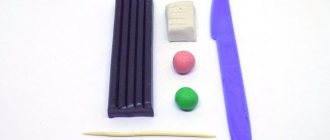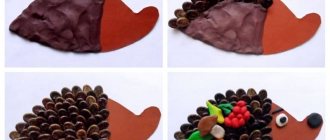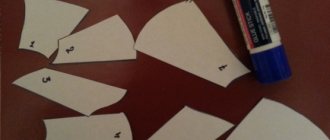Bas-relief sculpture “The houseplant has bloomed”
Greeting game “Our smart heads”
Our smart heads will think a lot, cleverly. The ears will listen, the mouth will speak clearly. Hands will clap, Feet will stomp. Our backs straighten, we smile at each other.
Observing indoor plants
— Walking on the street now, you see a lot of flowers. But the cold will come, winter will come, and then you won’t see flowers on the street. And people always want to admire flowers - both in winter and in summer. So people came up with the idea of growing flowers in their houses, in the rooms where they live. And not only flowers, but also other plants. So they began to call such plants that are grown in the rooms of the house “houseplants.” Children look at violet, geranium and clivia. Attention is drawn to the presence of flowers, color, and shape of leaves. Geranium leaves can be disturbed and smelled, then explained that the plant is protecting itself in this way.
Didactic game “Come to the plant that I will name”
— Go to the tallest plant. This is geranium. Go to the shortest plant. This is a violet. Go to a medium-sized plant. This is clivia.
One, two, three, go to the violet! One, two, three, go to the geranium! One, two, three, go to the clivia!
Construction of “Flower in a Pot”
— Place geometric shapes in their place to make a flower in a pot. What geometric shapes does the pot consist of? From the square. How many squares? One. What geometric shapes is a flower made of? Circle and ovals. How many laps? One lap. How many ovals? Three ovals. What geometric figure is the stem made of? From a rectangle. How many rectangles? One rectangle. What geometric shapes are leaves made of? From Triangles. How many triangles? Two triangles.
Didactic game “Which plant is the leaf from?
- Look at these leaves and these plants and try to determine which plant each leaf fell from.
Didactic exercise “Arrange the flowers”
— Each pot has a number written on it. Arrange the flowers so that in each pot as many flowers bloom as the number written on this pot. How many flowers will bloom in a pot with the number “1”? One flower. And in a pot with the numbers “2” and “3”?
Didactic game “Match saucers to flower pots”
- Choose a saucer of the same color for each pot.
Drawing with Clivia paints
— Clivia has long thin leaves. Paint these leaves on this plant with a brush and green paint.
Bas-relief sculpture “The houseplant has bloomed”
“It’s time for the flowers to bloom on this indoor plant.” Let's make flowers for him ourselves using plasticine and these thread flowers. Roll out balls from plasticine, press them onto the picture with a houseplant, place a flower on top of the plasticine and press it down with your palm. Remove the flower and see what happens. Make more flowers for this indoor plant in this way.







